Yakutethnoexp. Part I
February The first ethnographic expedition explored the great horizontal expanse of Russia as well as a little bit of Mongolia. The second ethnographic expedition covered all of Ukraine. The third ethnographic expedition spanned the entire Caucasus region and Kazakhstan. This next edition is dedicated entirely to Yakutia and Taymyr. MoscowMapGood old Coucousique (my Toyota FJ Cruiser) was once again covered with sponsors’ logos and joined a crew of three experienced Nissan Patrols. The car was fully winterized and outfitted for polar driving conditions. New tires, better shock absorbers, extra heaters, a double windshield and—most importantly—a satellite Internet antenna on the roof. 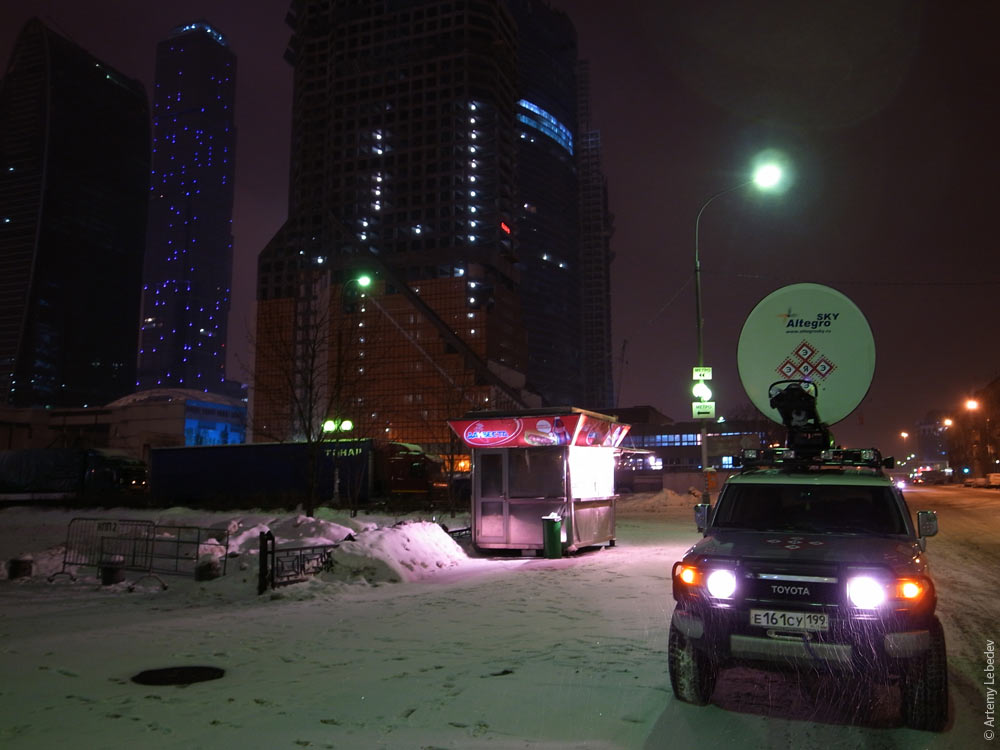 All the cars were loaded into railroad containers in Moscow on February 4th and arrived at the starting point of the expedition around February 21st—22nd. NeryungriMapThe PA system in the Yakutia Airlines Boeing wasn’t working. The flight attendant stood in the aisle and loudly announced that the engines were functioning normally. No flight safety instructions were given. We almost landed in Neryungri on the first try, but there was some kind of cleaning equipment on the runway, so we had to make another circle above the airport. The baggage claim resembles Wheel of Fortune. 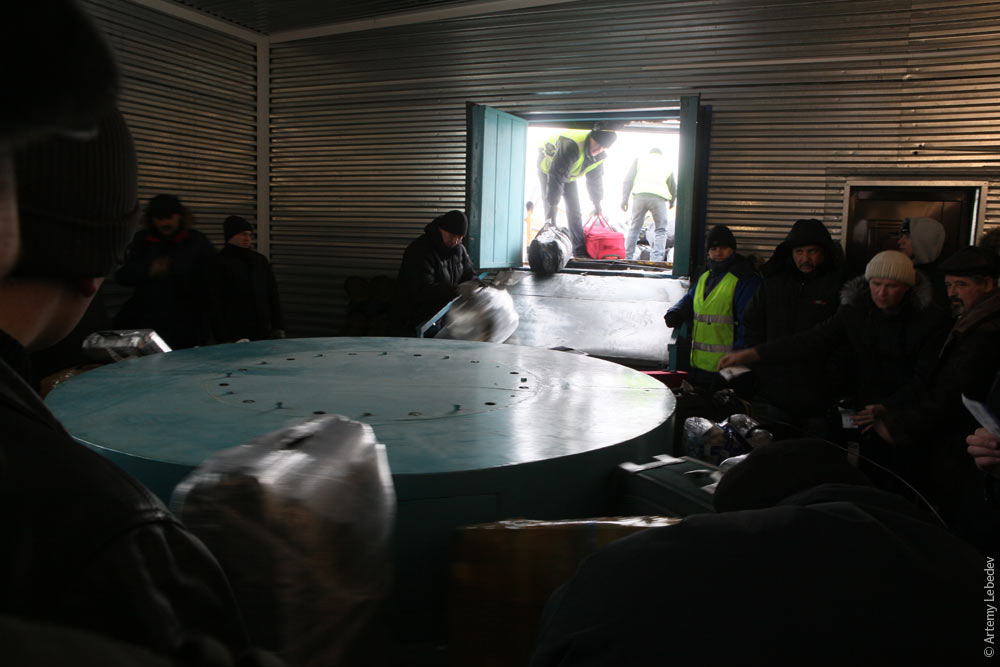 From the airport, we went straight to the railway station to unload our cars off the containers. 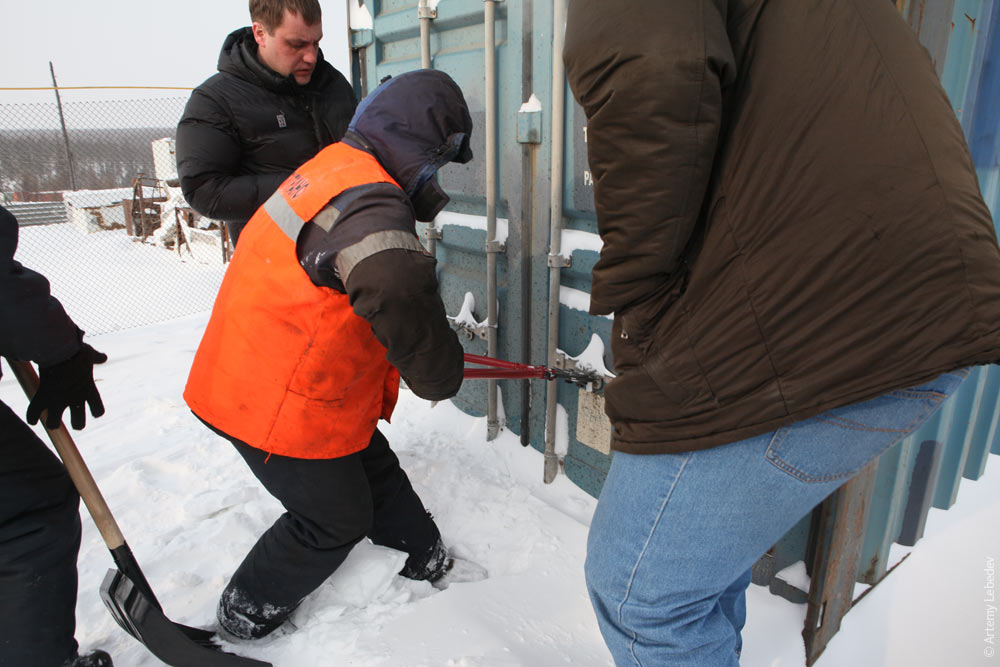 Neryungri is located in the south part of the Yakutia Republic and connected to the railway system, so it’s not quite the real Yakutia. Highway patrol creatives at work. 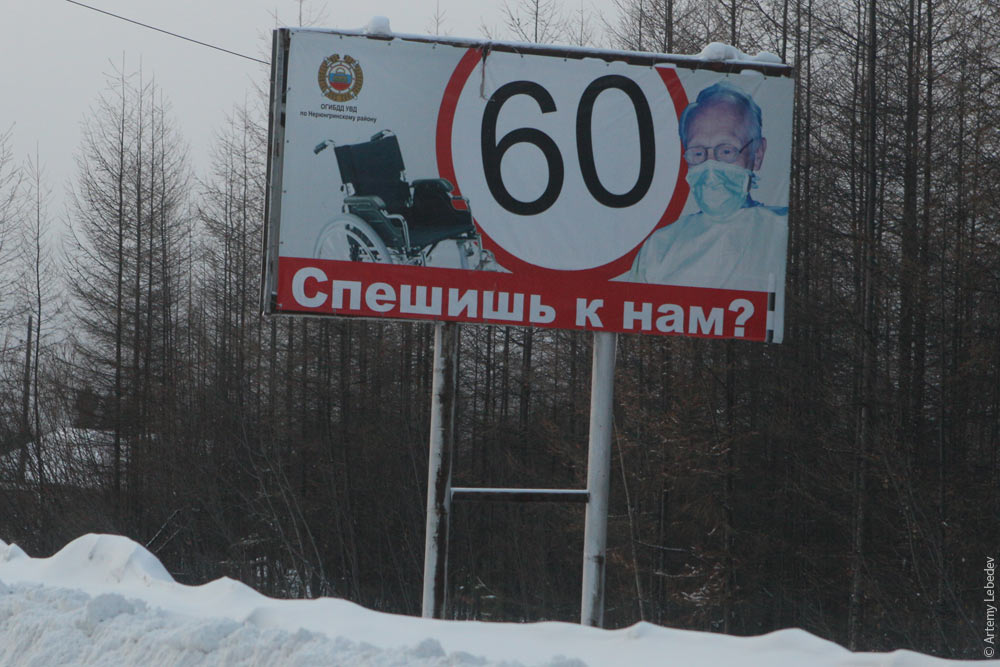 In a rush to see us? The entire city consists of “residential area begins” and “residential area ends” signs. 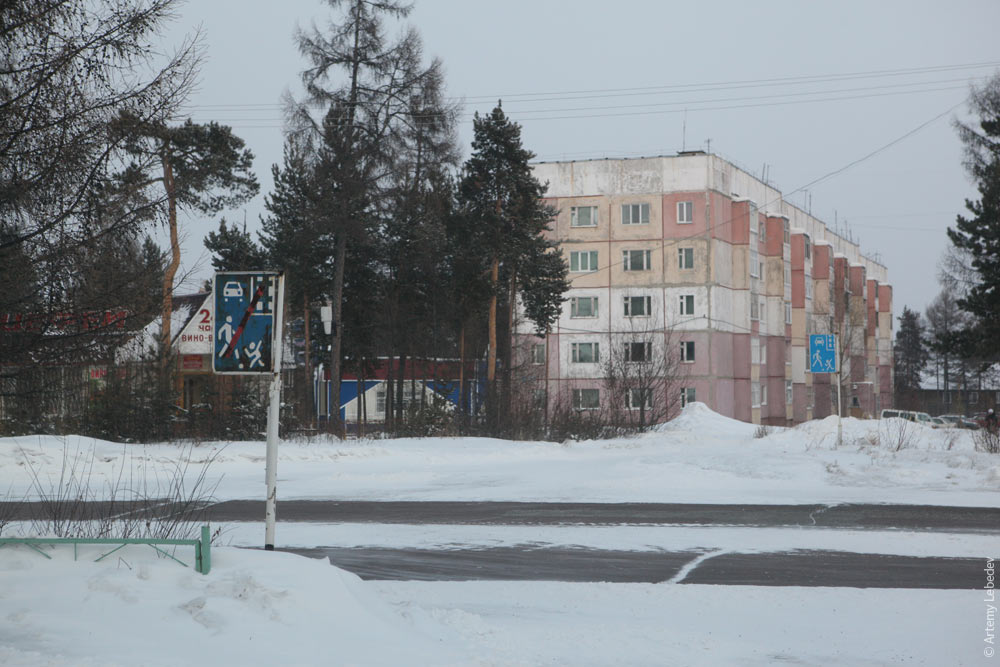 This place also has the country’s highest concentration of “transporting explosive materials in passenger cars is prohibited” signs. 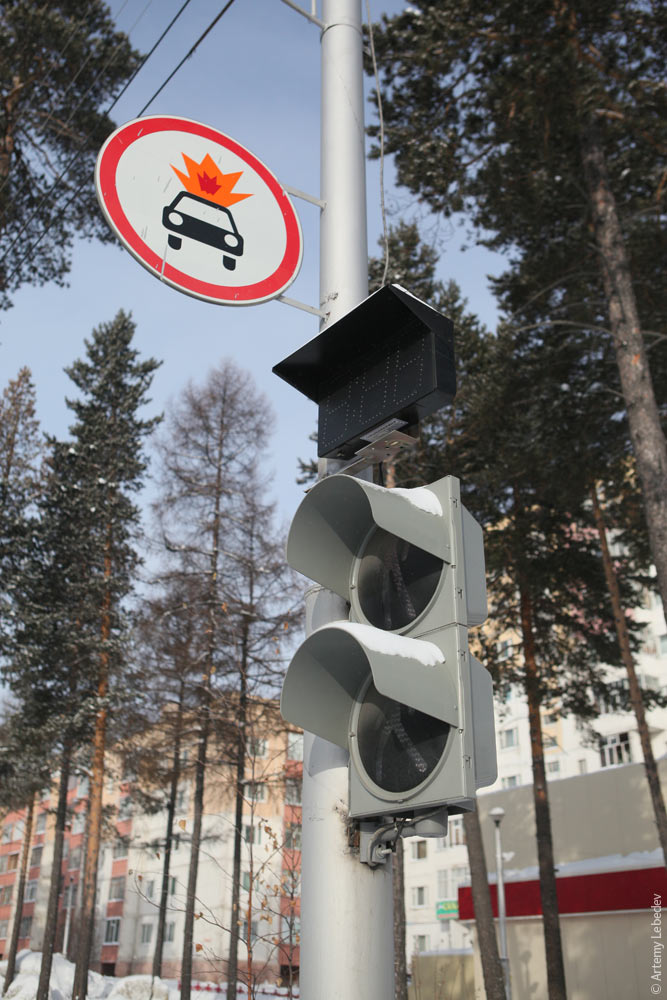 The green pedestrian symbols here are normal, and the red ones are slightly odd. 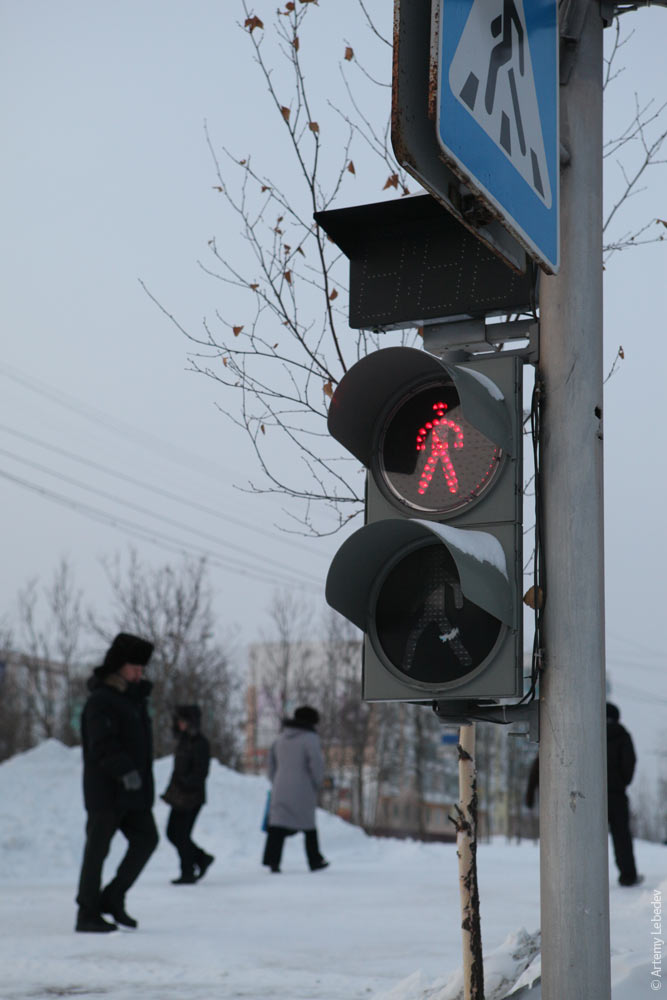 There are individual TV antennas installed on every building. So the total amount of antennas ends up being quite ridiculous. 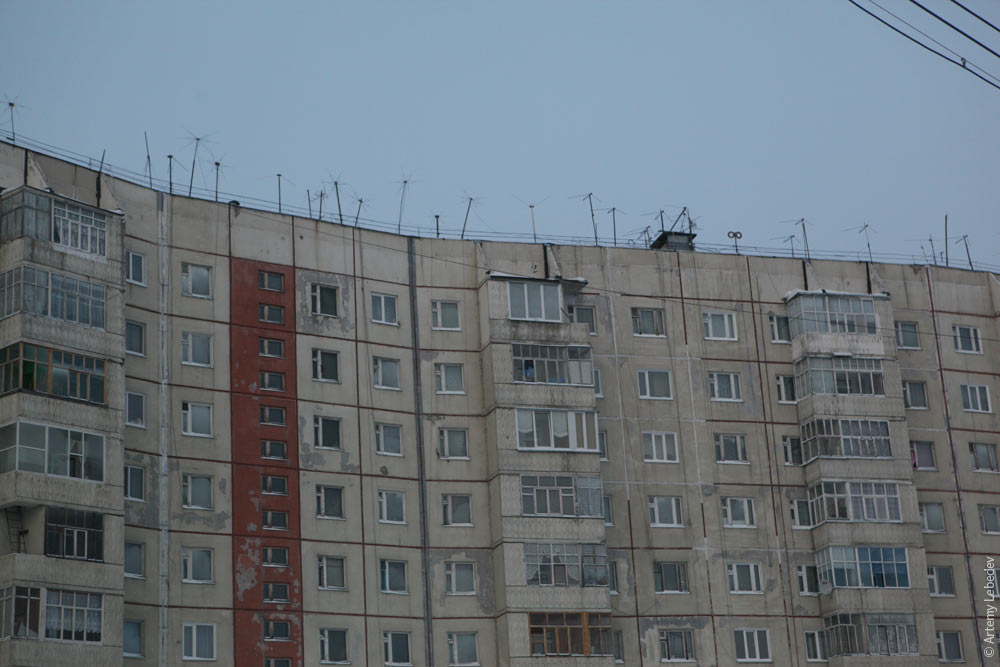 Another unique local feature: pyramid-shaped ventilation chimneys on the roofs. You won’t find ones like this anywhere else.  Neryungri graffiti. 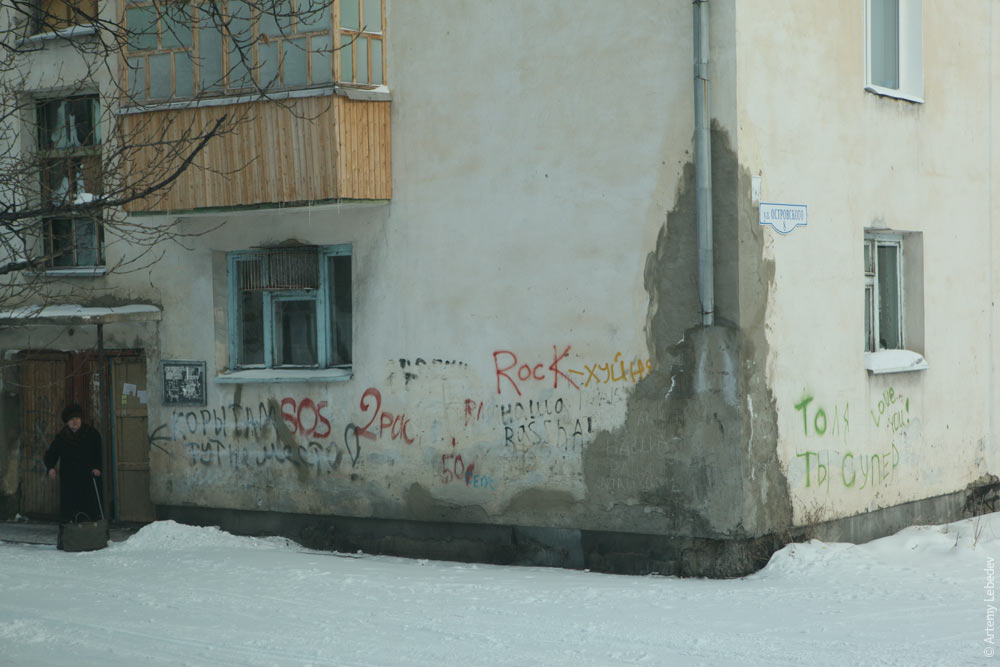 The wide streets and dull buildings remind me of Bratsk. 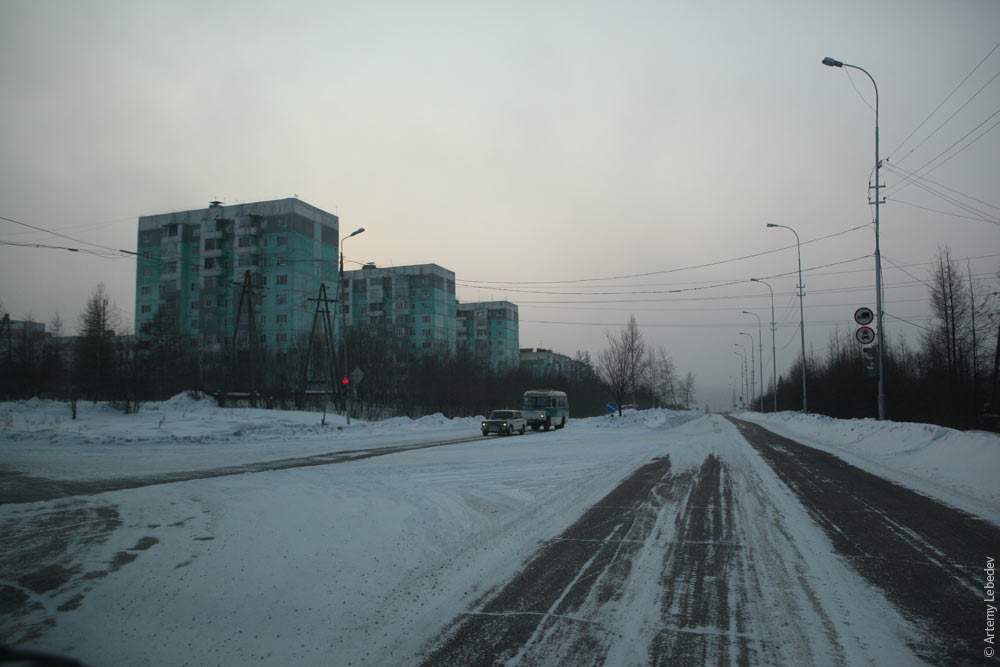 A payphone. 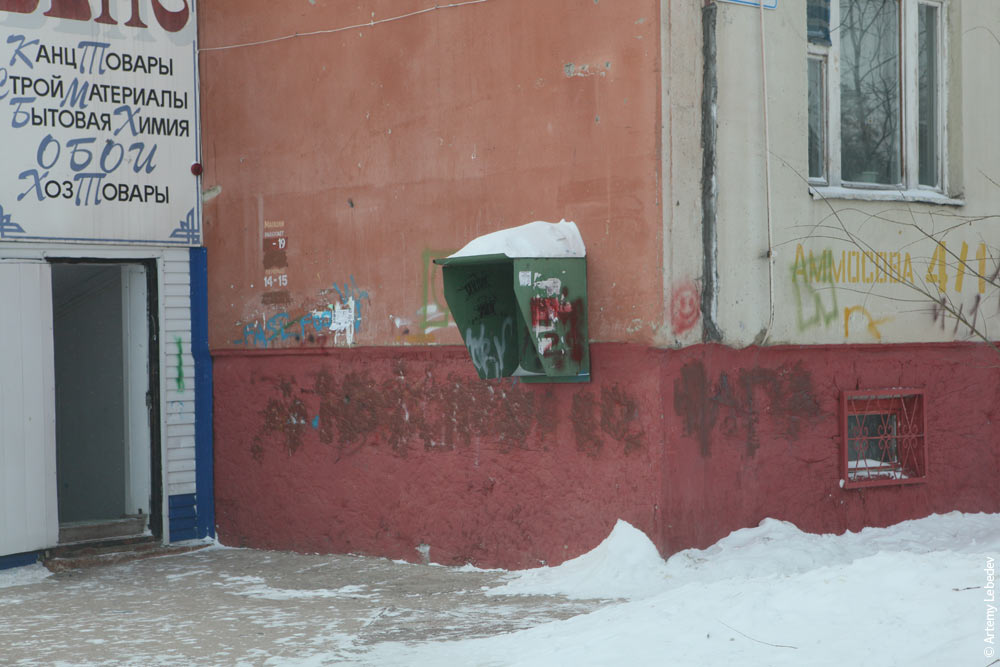 Stationery. Construction materials. Household cleaning products and supplies. Wallpaper A dump. 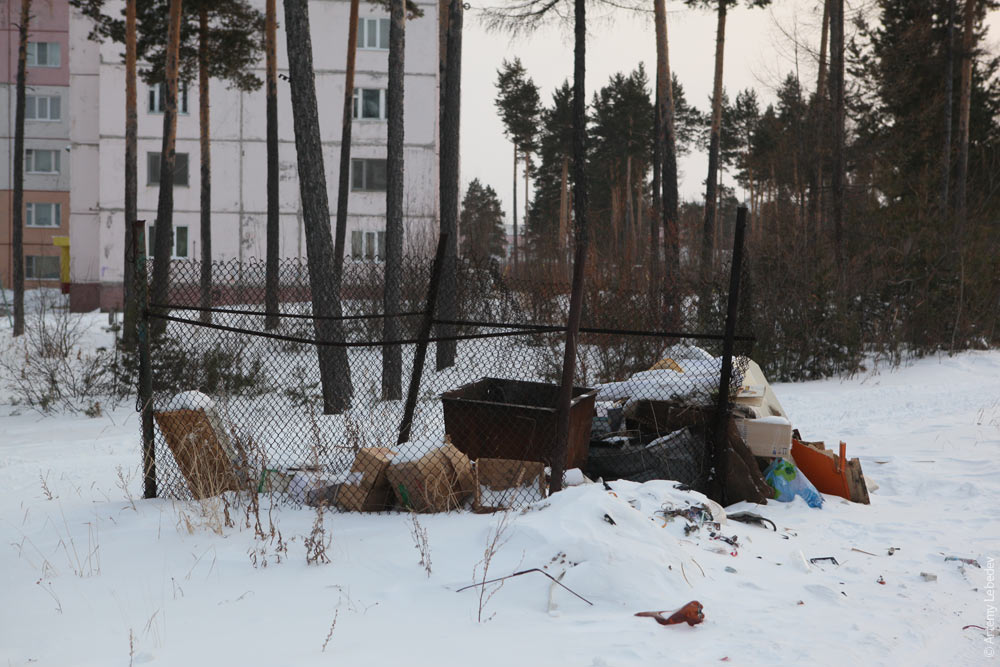 A bus stop: wide and open to the wind. 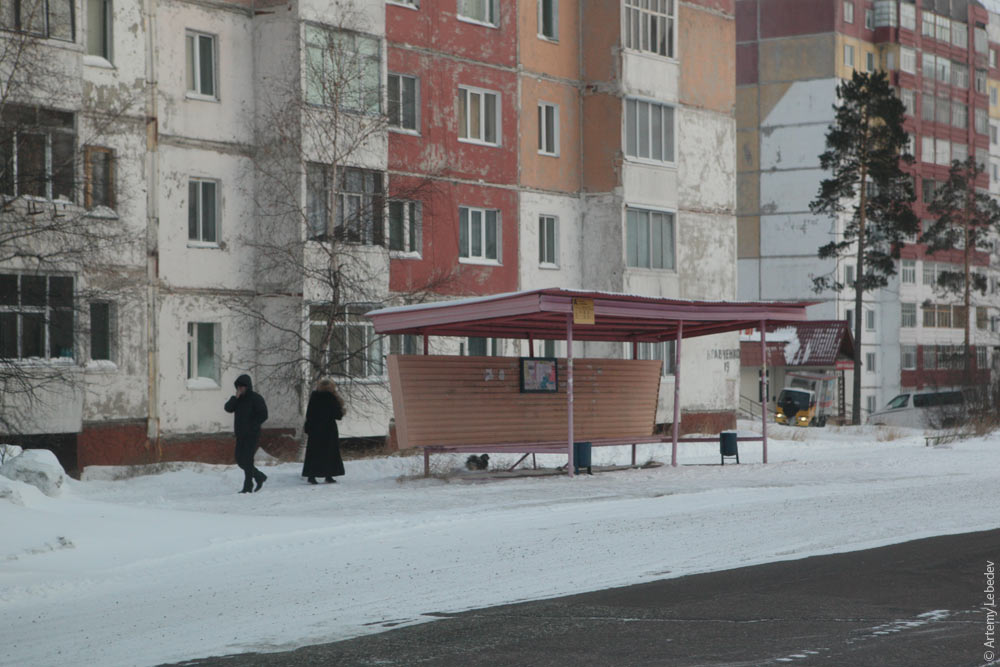 A different bus stop: more protected from the wind. 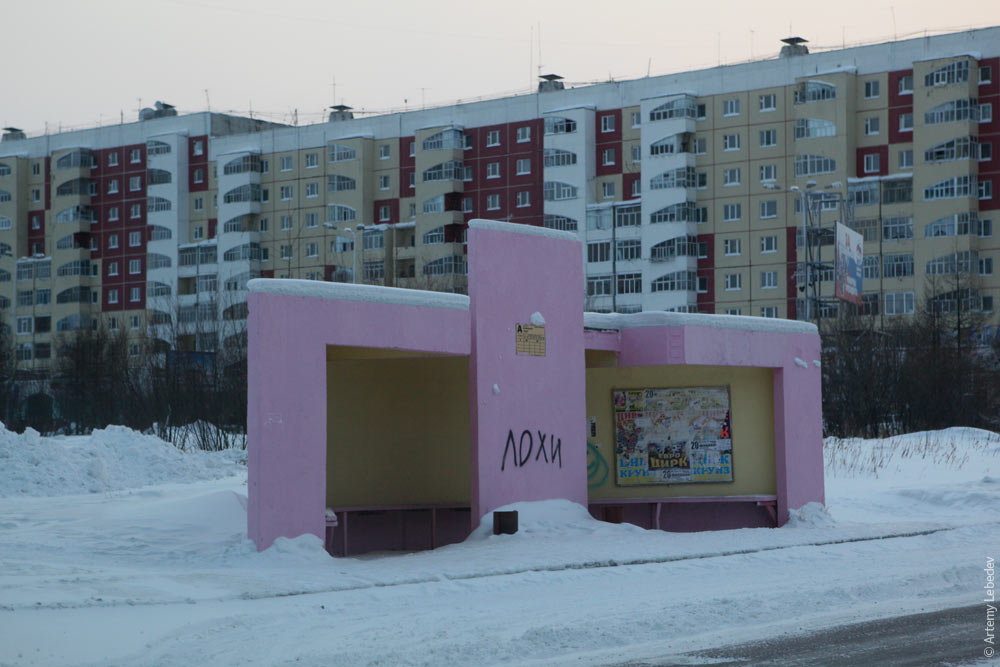 Losers A typical building entrance. One side is for people, the other—for trash. 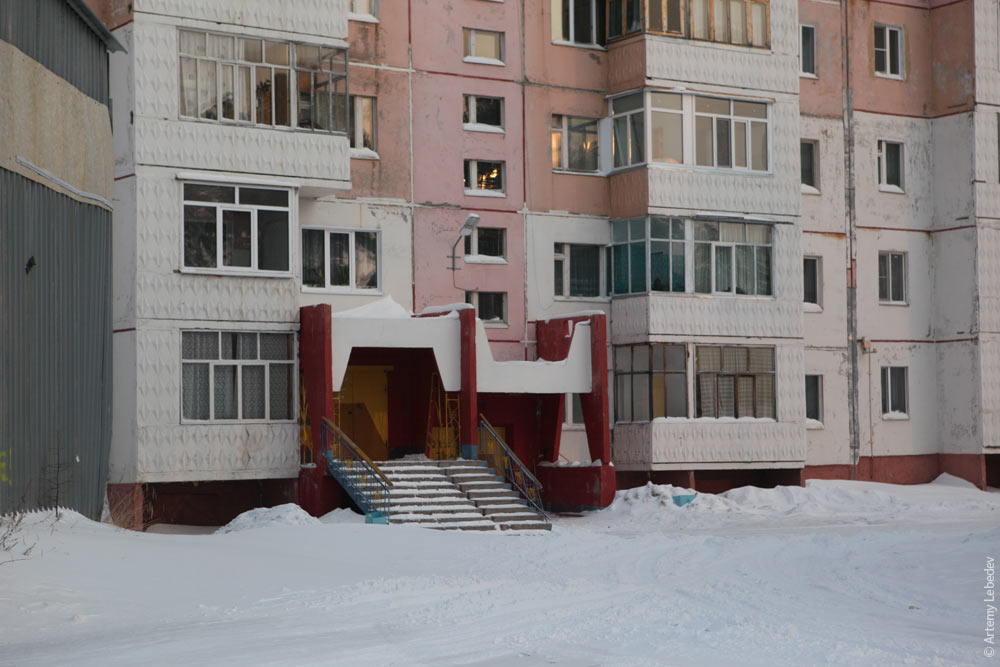 Like in every other city in Yakutsk (which we have yet to see), there’s a large number of ice sculptures. 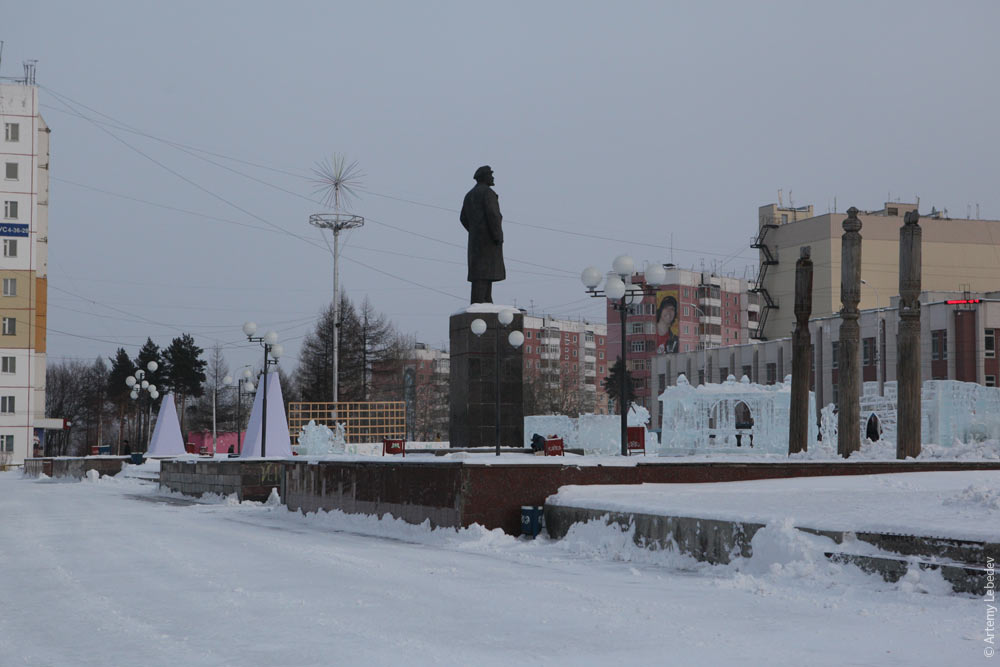 The expedition has set out. 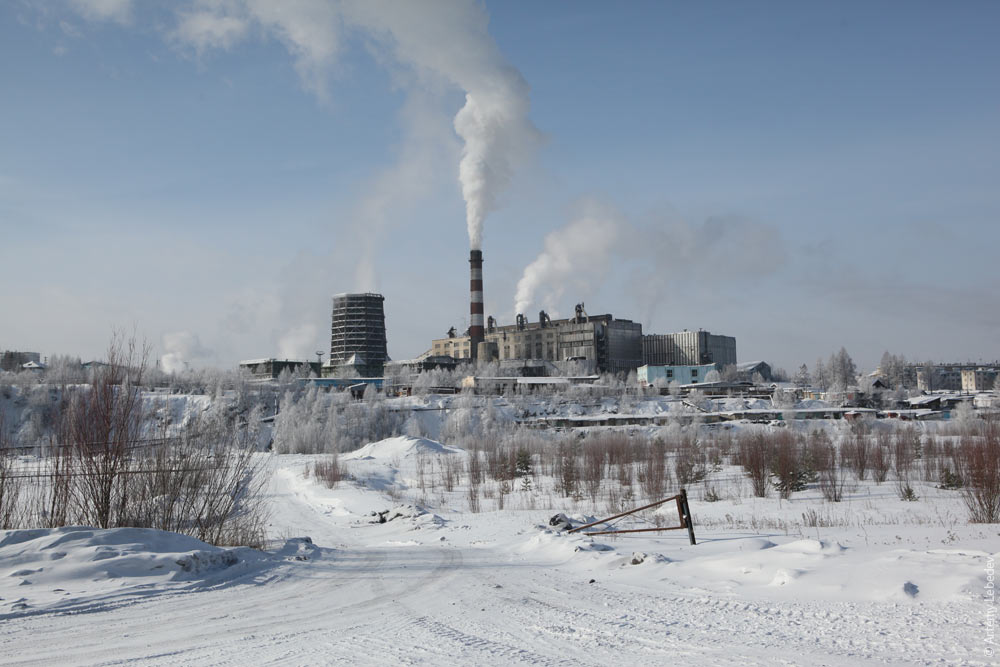 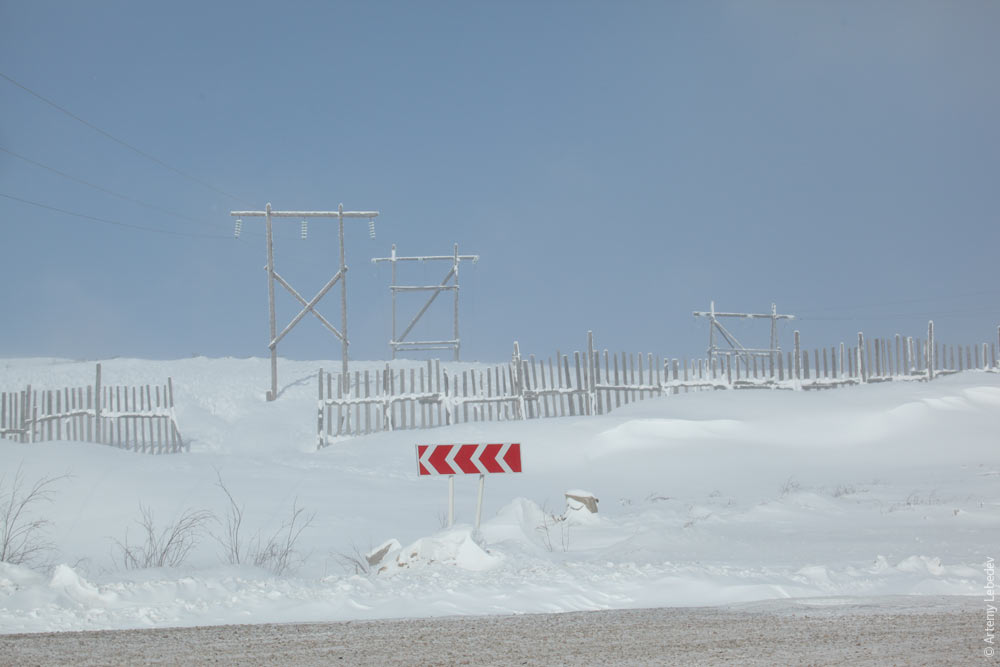 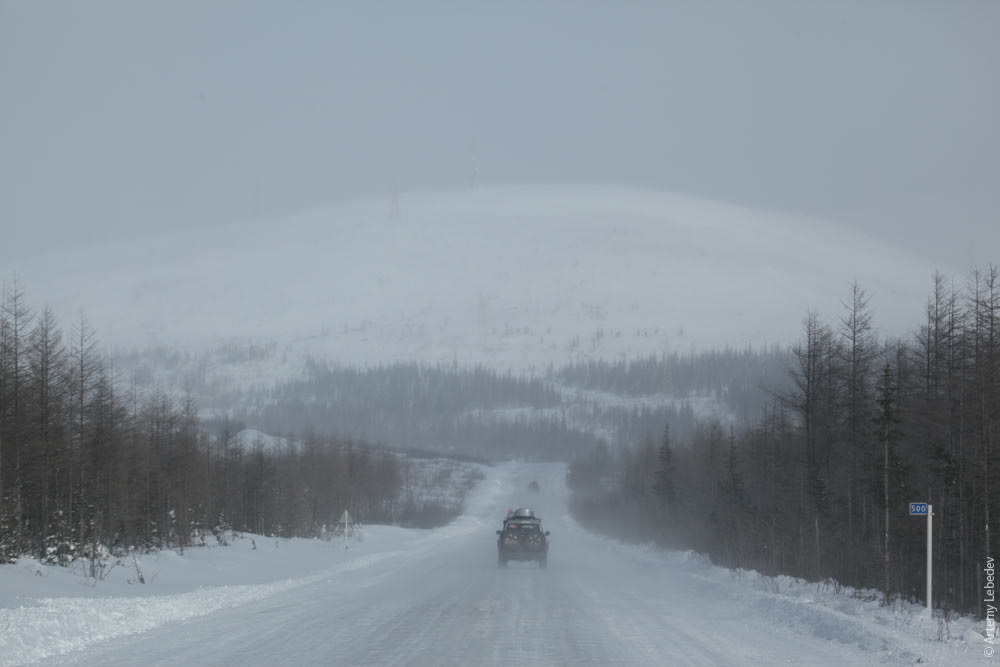 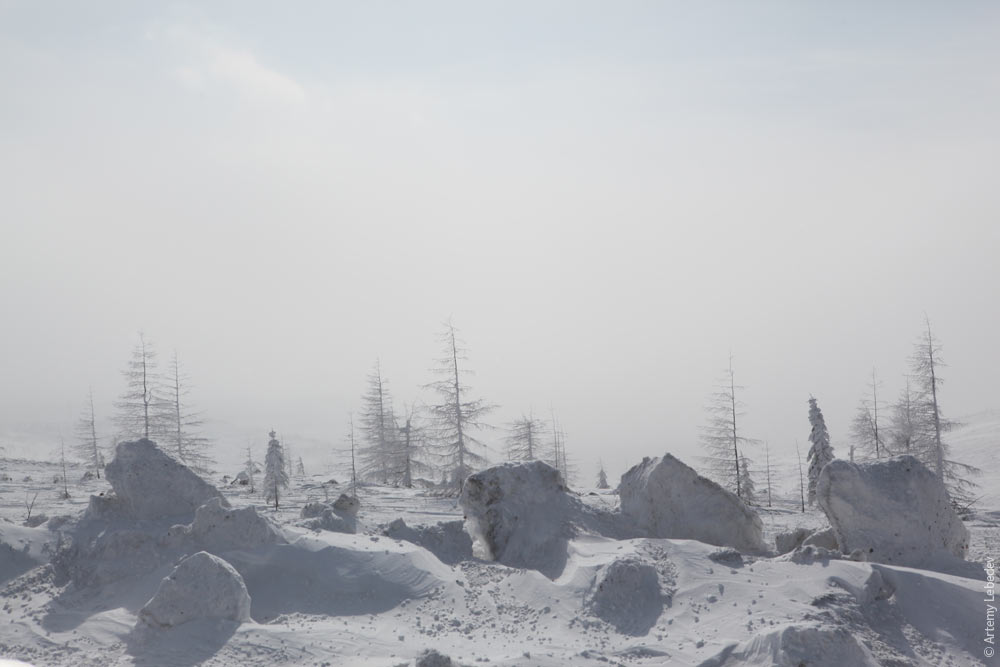 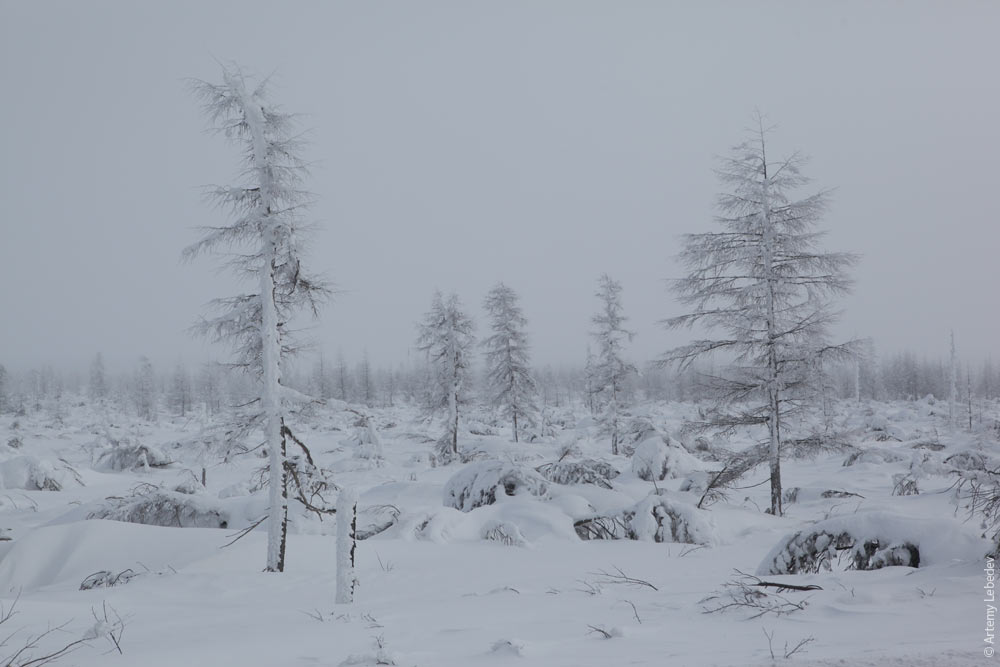 An interesting pattern: in areas with dwarf trees, the kilometer posts are giant, taller than the car. 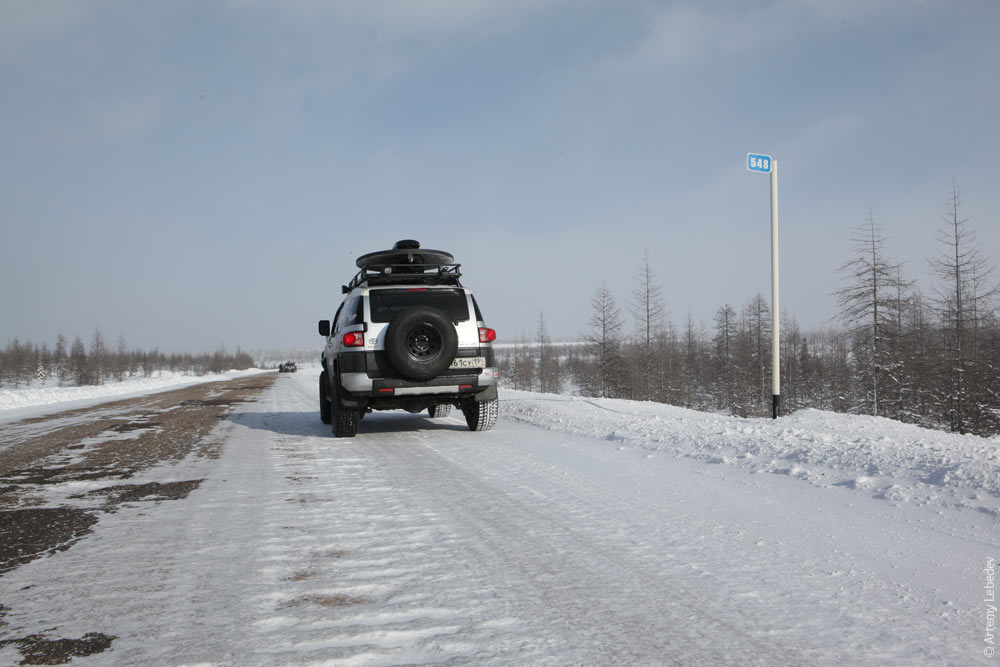 And in areas with normal trees, the kilometer posts are dwarf-sized. 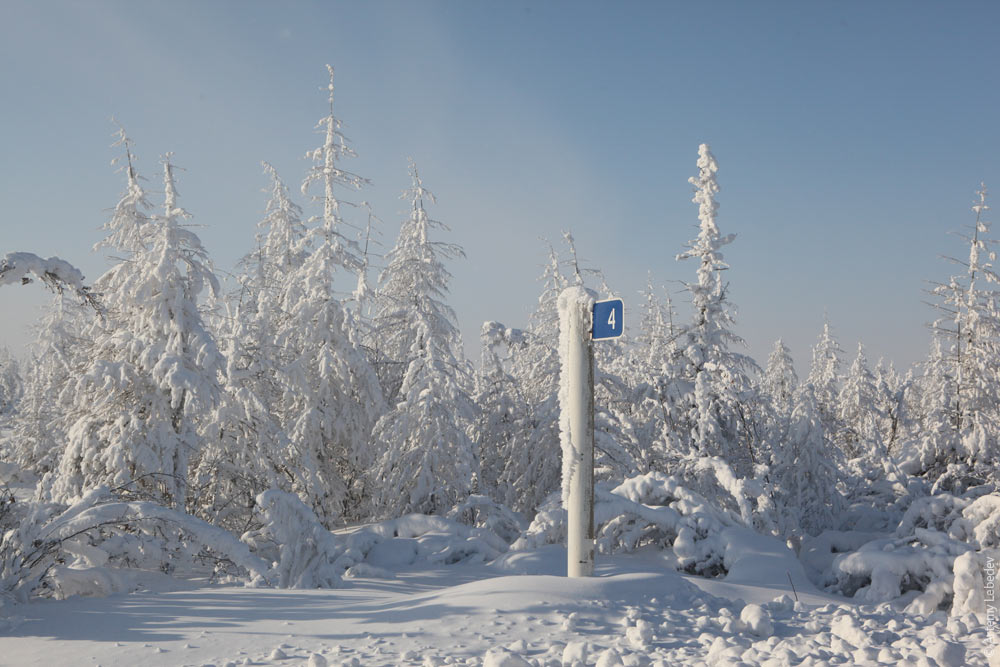 There aren’t many cities in Yakutia, so the reader will see a somewhat larger number of small towns than is usual for our expeditions. Bolshoy NimnyrMapYet another town. 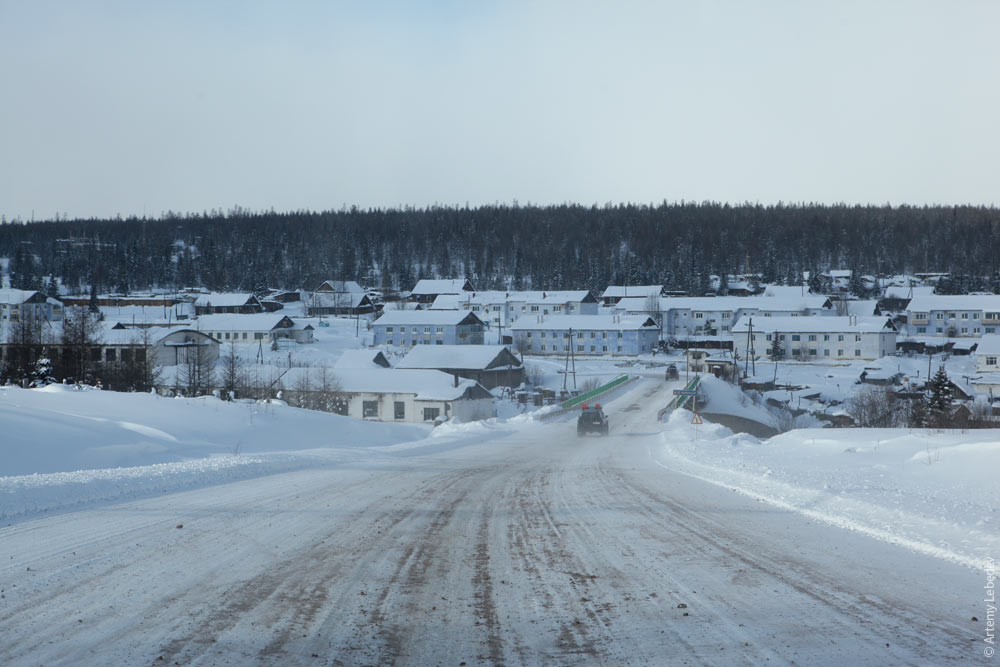 With undisturbed Soviet posters at an abandoned maintenance depot. 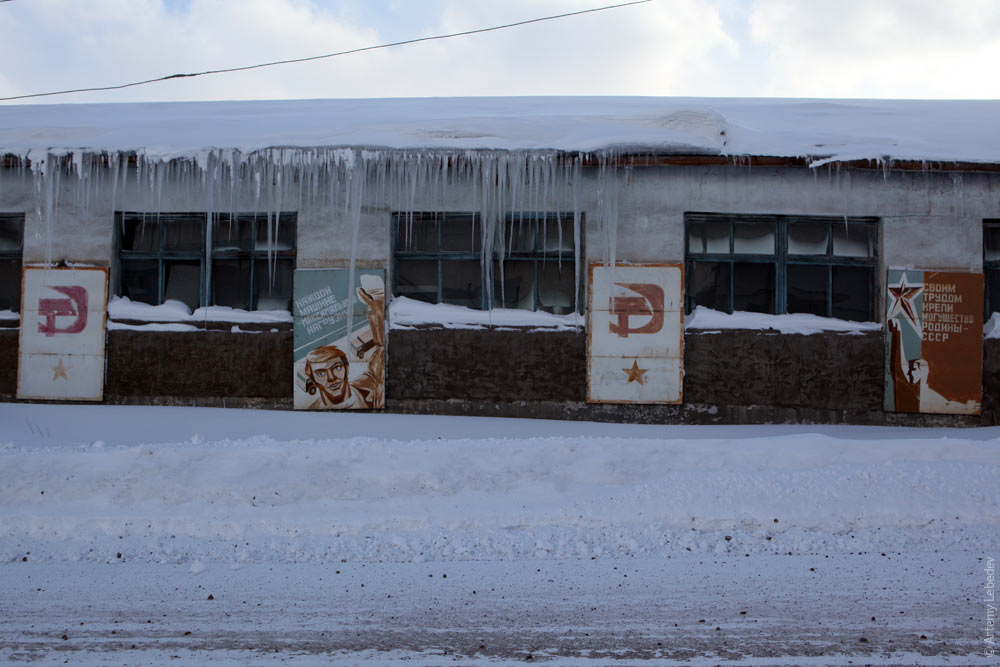 AldanMapWhen the smoke stack is in operation, it’s very hard not to notice Aldan from a distance. 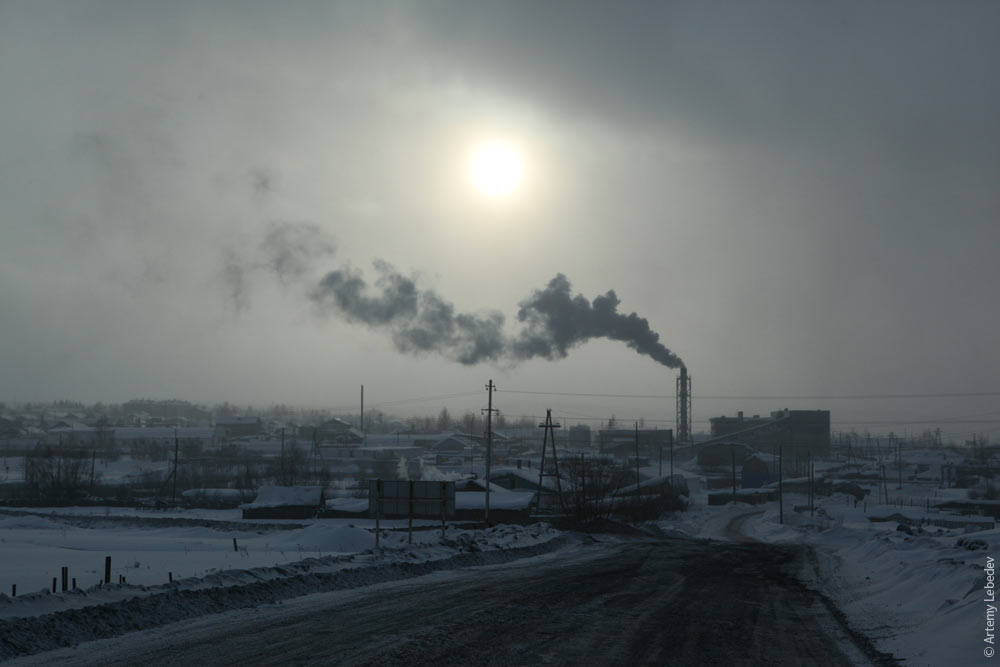 There isn’t much to look at here. Maybe a couple of trash dumpsters. 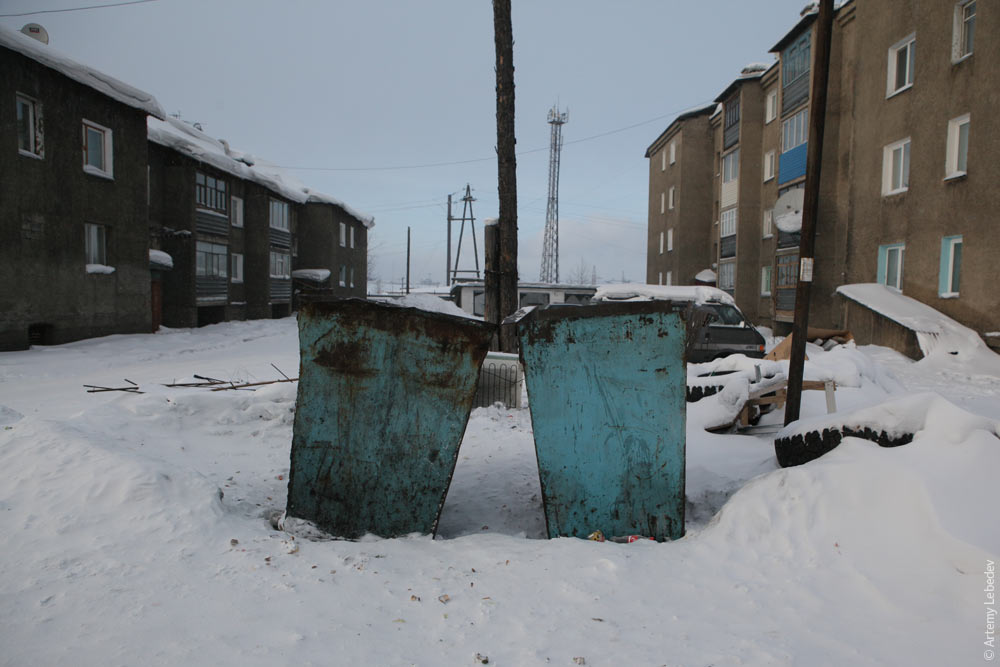 The whole town is seriously buried in snow. 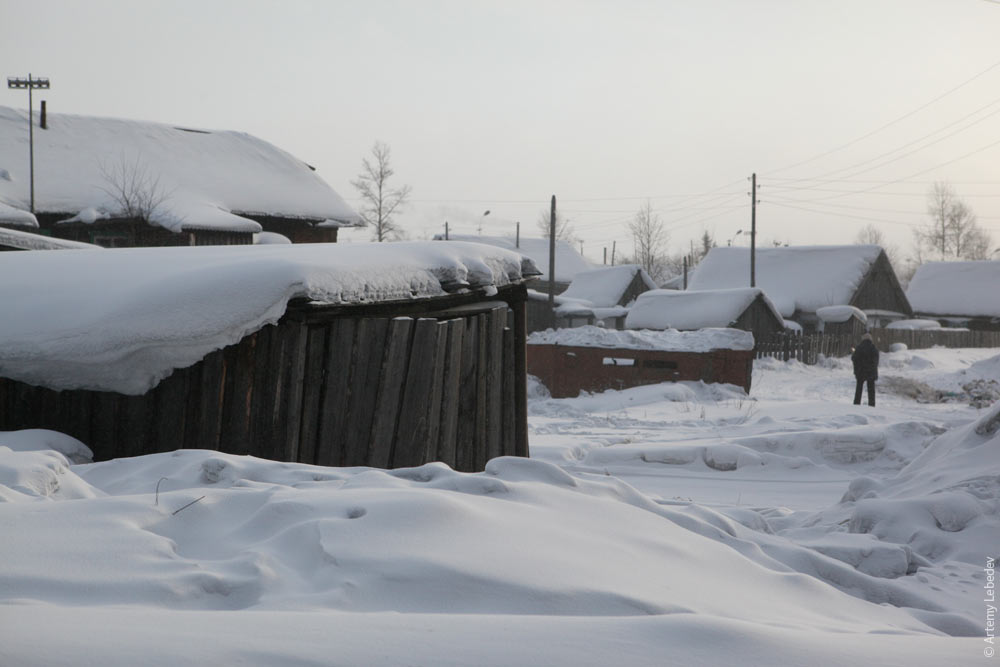 It’s easier to build sturdy roofs than to clear the snow off.  All the roads in Yakutia, however, are cleared quickly and properly. 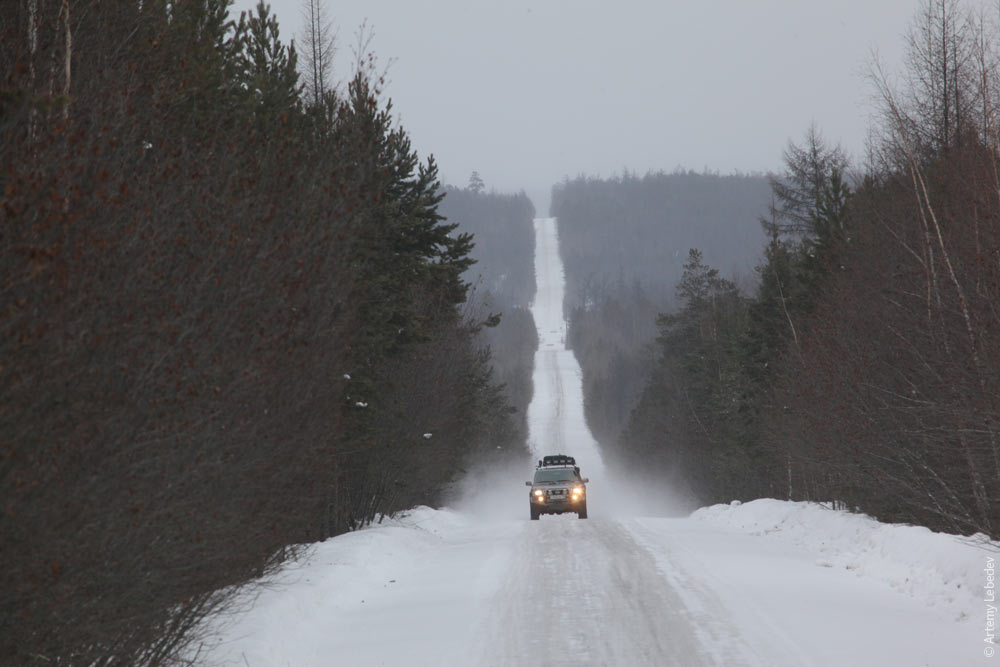 A variety of snow-removal machinery is at work on the roads at all times: all sorts of plows, snow blowers, snow scoops being hauled. I imagined endless furrows on the highways, but it turns out that the roads are cleared almost as well here as in Alaska. 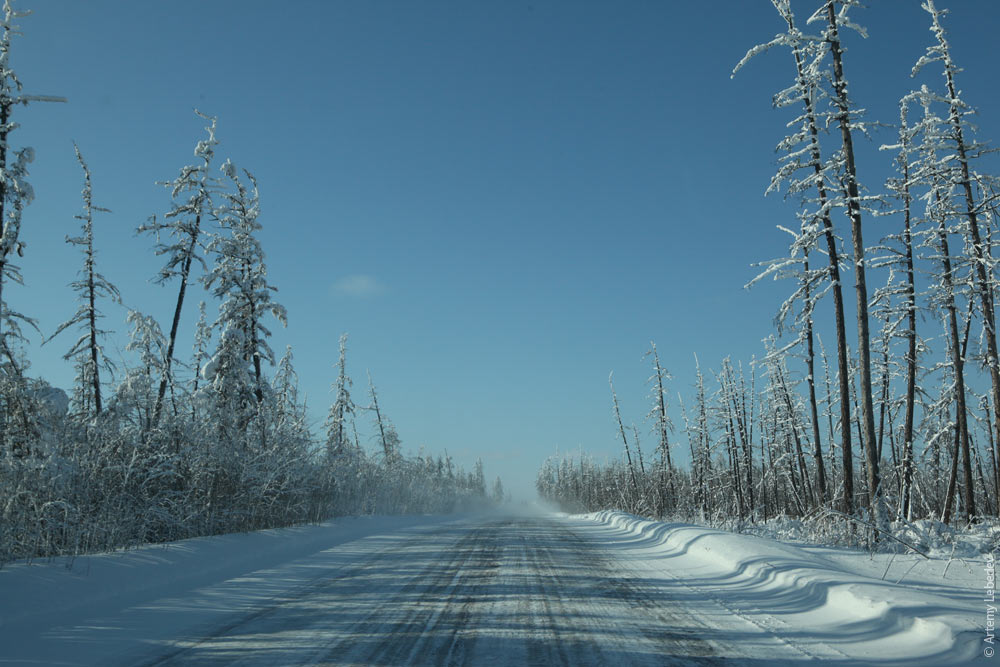 |